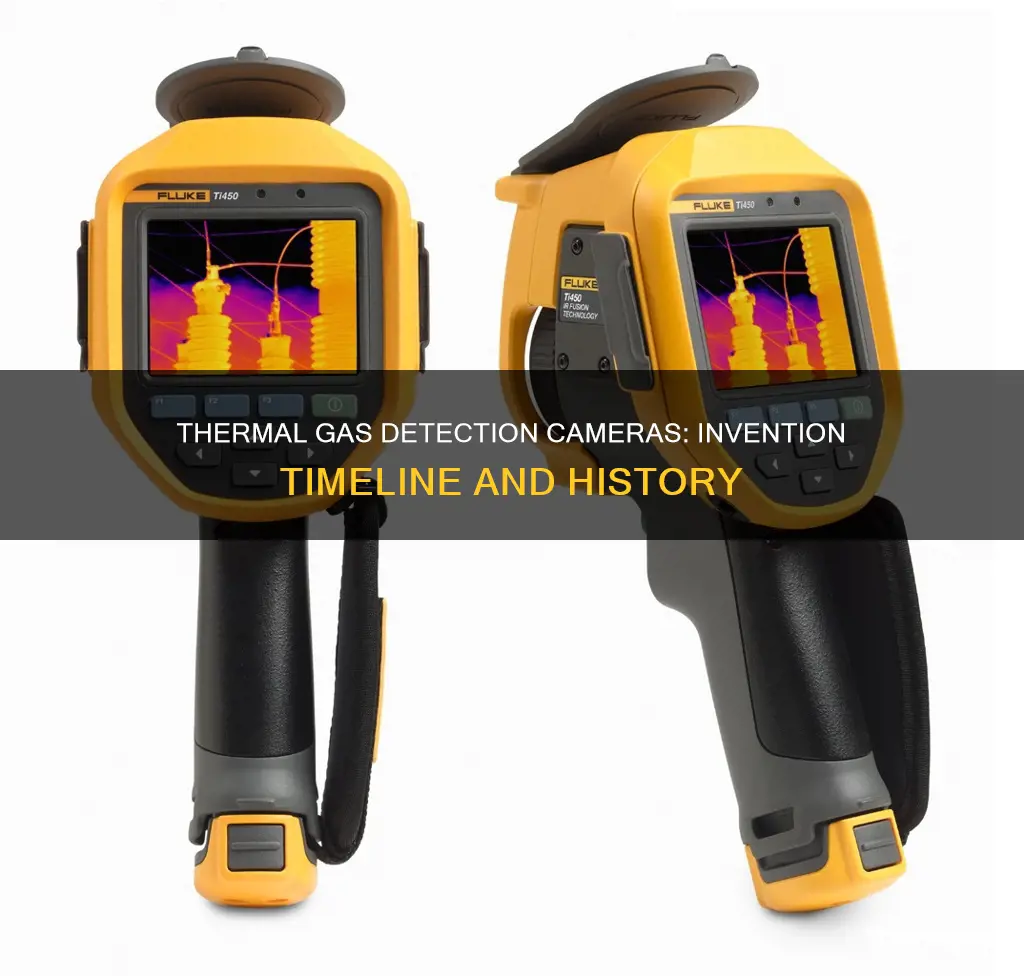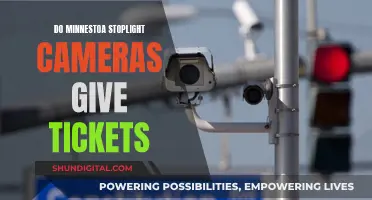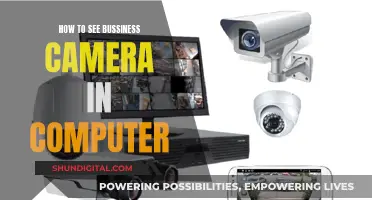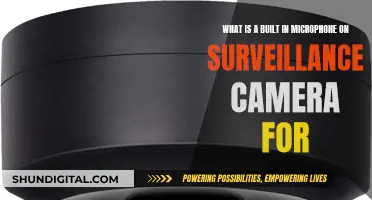
Thermal imaging cameras, also known as TICs, are vastly different from conventional cameras. While a typical camera uses visible light, thermal imaging cameras use infrared radiation to create images. The technology was first developed in 1929 by Hungarian physicist Kalman Tihanyi, who created the first infrared-sensitive camera. This early camera was called the Evaporograph and was used by the British Army for anti-aircraft operations following World War I. Since then, thermal imaging technology has evolved and been adopted by various industries, including firefighting, law enforcement, building inspections, medicine, and automotive. Today, thermal imaging cameras are widely used for their ability to detect heat signatures and gases, providing valuable insights and protection in a range of applications.
| Characteristics | Values |
|---|---|
| First thermal imaging camera | Evaporograph, created in 1929 by Kálmán Tihanyi |
| Purpose | Anti-aircraft defence in Britain |
| First infrared line scanner | Created in 1947 by the US military and Texas Instruments |
| First naval thermal imager | Created in 1970 by Philips and EEV (English Electronic Valve) |
| Microbolometer technology | Developed in 1980 by Honeywell |
| First thermal imager for firefighting | Created in 1998 by Bullard |
What You'll Learn

The first thermal imaging camera was invented in 1929
Thermal imaging cameras are vastly different from your average camera. While a typical camera uses visible light, a thermal imaging camera uses infrared radiation to create images. Infrared wavelengths lie beyond the visible spectrum and are a type of radiation beyond red light. The discovery of infrared was made in 1800 by astronomer Sir William Herschel, who at the time was trying to devise a filter to reduce the sun's glare when observing it through a telescope.
The first thermal imaging camera invented in 1929 was a significant milestone in the development of thermal imaging technology. This technology has since been used in various applications, including military, law enforcement, firefighting, and industrial activities. The cameras have helped save multiple lives each year through victim identification and removal from low-visibility conditions.
Over time, thermal imaging technology has continued to advance and improve. In the late 1950s and 1960s, companies like Texas Instruments, Hughes Aircraft, and Honeywell developed single-element detectors that scanned scenes and produced line images. In the 1970s, the pyroelectric vidicon tube was developed, becoming the core of a product first used by the Royal Navy for shipboard firefighting. In the late 1980s, the federal government awarded contracts to Raytheon and Honeywell for the development of thermal imaging technology for practical military applications.
Today, thermal imaging cameras have become more accessible and are used in various industries, including building inspections, medical diagnostics, security, transportation, and many others. The technology has also been integrated with other equipment, such as helmets and drones, expanding its capabilities and applications.
Understanding Raw Camera Format for Photography
You may want to see also

Thermal cameras can be used to detect gas
Thermal imaging cameras, also known as TICs, have been in use since the early 20th century, with the first camera, the Evaporograph, being created in 1929 for anti-aircraft defence in Britain. Since then, thermal imaging technology has evolved and found applications in various fields, including firefighting, military, automotive, and gas detection.
Specialised thermal cameras, known as Optical Gas Imaging (OGI) cameras or Gasfinders, are designed specifically for gas detection. These cameras use infrared thermography to detect the heat emitted by gases, allowing for real-time visualisation. OGI cameras employ a unique spectral filter that restricts the wavelengths of radiation passing through to a narrow range, known as the band pass. This enables the detection of specific gases, as each gas absorbs radiation within a particular wavelength range.
The FLIR GF series of OGI cameras, for example, can detect hydrocarbon leaks, such as methane (CH4), and refrigerant leaks in various industries, including food, pharmaceuticals, and automotive. Another example is the InfiRay G600 Uncooled Infrared Camera, which offers high-definition infrared detection, extensive gas species detection, exceptional sensitivity, and precise spatial resolution for gas leak detection.
The use of thermal cameras for gas detection provides significant advantages in terms of safety, efficiency, and environmental protection. By visualising invisible gases, these cameras help prevent accidents, mitigate environmental impacts, and ensure regulatory compliance.
Charging the iForce Camera: A Step-by-Step Guide
You may want to see also

They are used by firefighters to see through smoke
Thermal imaging cameras are an invaluable tool for firefighters, enabling them to see through smoke and heat and locate fires and victims in burning buildings. They are also used to search for hot spots, plan fire attacks, monitor fire conditions, and train firefighters. With thermal imaging technology, firefighters can detect body heat and heat from fires, making it easier to rescue trapped victims and identify hot spots. This technology also helps in planning fire attacks by identifying the best approach and extinguishing methods.
The development of thermal imaging technology dates back to 1929 when Kálmán Tihanyi created the Evaporograph for anti-aircraft defence in Britain. However, its application in firefighting became prominent with the creation of the first naval thermal imager by the Royal Navy in 1970. The Seattle Fire Department acquired its first thermal imaging camera in 1997, and since then, its popularity and adoption have increased, especially after the September 11 attacks due to increased government grants.
Thermal imaging cameras work by rendering infrared radiation as visible light. They detect heat, smoke, or dust using short-wave infrared (SWIR) thermal imaging and then visualise this information. This allows firefighters to see through smoke, heat, and temperature differences, even in low-visibility conditions. The cameras use grayscale to represent normal temperatures and highlight dangerously hot surfaces in different colours.
The benefits of thermal imaging cameras in firefighting are significant. They enable firefighters to quickly locate the seat of a structure fire and identify the heat signatures of obscured victims. Additionally, these cameras can detect smouldering fires inside walls, overheating electrical wiring, and hot spots in cellulose insulation. They are also useful in ascertaining when a structure is safe to re-enter after a fire has been extinguished.
While thermal imaging cameras offer numerous advantages, there are some limitations to consider. One drawback is poor depth perception, which can lead to challenges in judging distances and increase the risk of tripping or colliding with obstacles. Additionally, since materials at the same temperature are displayed as the same colour, certain details visible in normal light may be missing from the thermal image. Despite these limitations, thermal imaging cameras have proven to be a valuable asset for firefighters, enhancing their ability to navigate through smoke and heat and perform their critical duties with increased clarity and precision.
Duracell AA Batteries: How Long Do They Power Cameras?
You may want to see also

They were originally developed for military use
Thermal imaging cameras, also known as TICs, were originally developed for military use. The technology was first invented in 1929 by Hungarian physicist Kálmán Tihanyi, who created the Evaporograph, an infrared-sensitive (night vision) electronic camera for anti-aircraft defence in Britain.
The US military soon caught wind of this innovation and, in 1947, they partnered with Texas Instruments to create the first infrared line scanner. This early iteration of thermal imaging technology took an hour to produce a single image. Despite this limitation, the camera was used on cargo planes and bombers at the outset of the Cold War.
In the following decades, thermal imaging technology was refined by various companies and research institutions, including Philips, EEV (English Electronic Valve), Raytheon, and Honeywell. These advancements led to the creation of the first naval thermal imager by the Royal Navy for shipboard firefighting in 1970.
The military recognised the immense advantages of thermal imaging in combat. For the first time, soldiers could see clearly in the dark and identify details through fog, snow, smoke, and adverse weather conditions. This revolutionised military strategies and tactics, giving commanders and troops on the ground an unprecedented level of visibility and situational awareness in a diverse range of environments.
>
While thermal imaging cameras were initially developed for military purposes, their applications soon expanded to other fields. By the late 1980s, federal governments began investing in the development of thermal imaging technology for practical military applications. This led to contracts with companies like Raytheon and Honeywell to enhance thermal imaging for rifle sights and drivers' viewers.
The technology's effectiveness in military contexts spurred its adoption by law enforcement and firefighting agencies. Firefighters, in particular, found thermal imaging cameras invaluable for seeing through smoke, locating survivors, and identifying hotspots during firefighting operations.
Attaching a Mod Camera Strap: A Quick Guide
You may want to see also

They work by leveraging infrared radiation to create images
Thermal imaging cameras, also known as TICs, are a type of thermographic camera used in firefighting. They were first developed in 1929 by Hungarian physicist, Kálmán Tihanyi, who invented an infrared-sensitive electronic television camera capable of capturing thermal images.
Thermal cameras work by detecting and capturing infrared radiation, which is a type of heat energy that is invisible to the human eye. All objects emit a certain amount of thermal energy, known as a "heat signature", and this is what thermal cameras can detect. The camera's lens focuses the infrared energy onto a thermal sensor, which then creates a visual image of the heat signature. This image is a representation of the temperature of the object, with warmer objects typically shown in yellow or orange hues, and colder objects in blue or purple.
The technology was initially developed for military use, but it has since been adapted for firefighting, where it is used to see through smoke, darkness, or heat-permeable barriers. Thermal cameras can detect body heat, making them useful for finding people trapped in fires. They can also be used to identify the seat of a fire or to detect smoldering fires inside walls.
The resolution of thermal cameras tends to be lower than that of visible light cameras because thermal detectors need to sense energy with larger wavelengths. This means that each sensor element needs to be larger, resulting in fewer pixels overall. However, thermal cameras can detect tiny differences in heat, as small as 0.01°C, and can be used in complete darkness or smoke-filled environments.
In recent years, thermal imaging technology has become more affordable and compact, making it more accessible for home inspectors and businesses. It has also found its way into cars, providing an extra layer of protection by detecting heat signatures and gases that would otherwise be invisible.
Understanding Raw File Support in Modern Cameras
You may want to see also
Frequently asked questions
The first thermal gas detection camera was made in 1929 by Hungarian physicist Kalman Tihanyi.
The first thermal camera was called the Evaporograph.
A thermal imaging camera is a type of thermographic camera that uses infrared radiation to create images.
Thermal imaging cameras consist of five components: an optic system, detector, amplifier, signal processing, and display. Together, these components render infrared radiation into a visible light representation in real time.
Thermal imaging cameras are used by firefighters to see through smoke and darkness and locate people trapped in burning buildings. They are also used in medical diagnostics, building inspections, security, transportation, and more.







